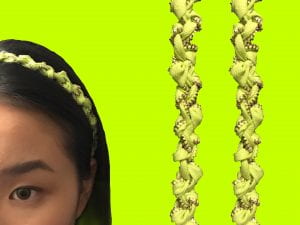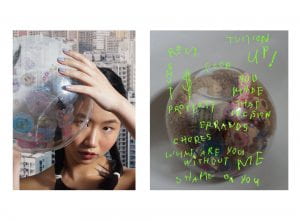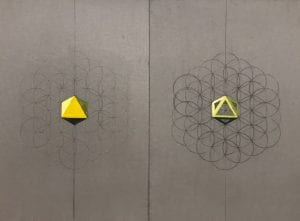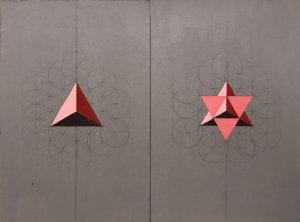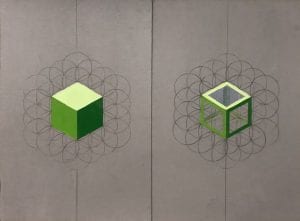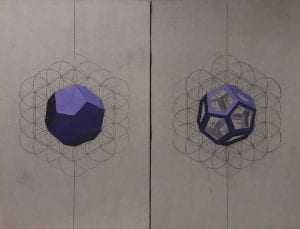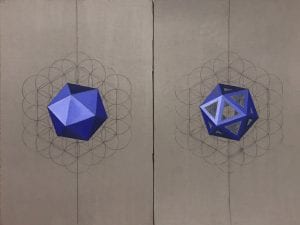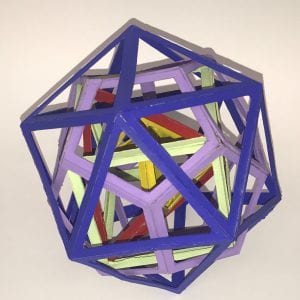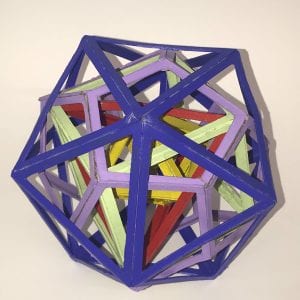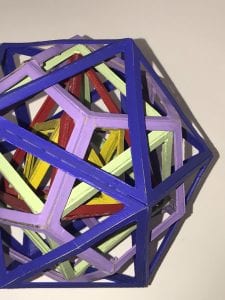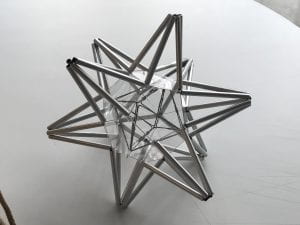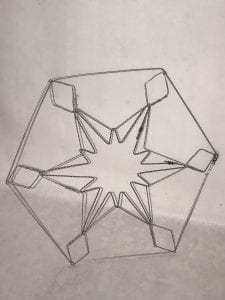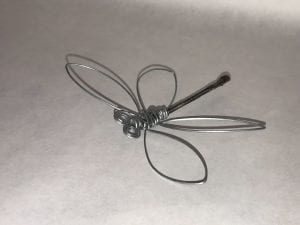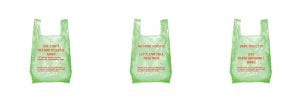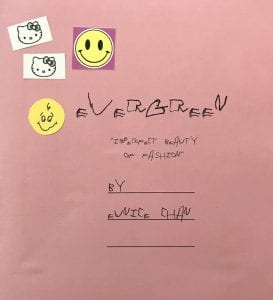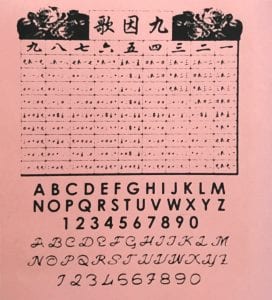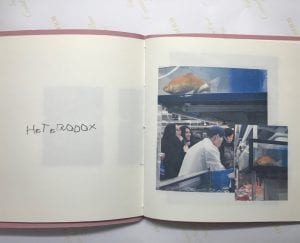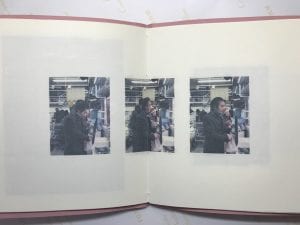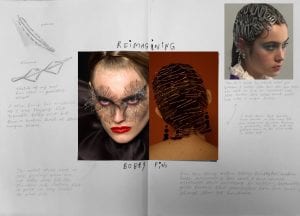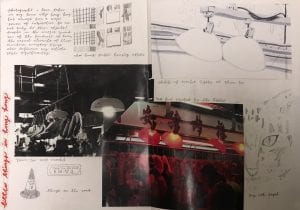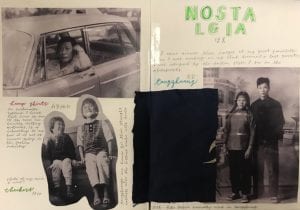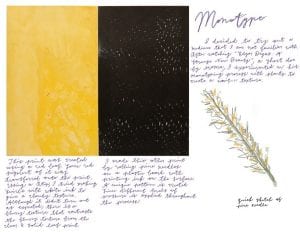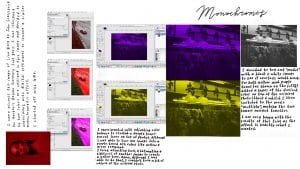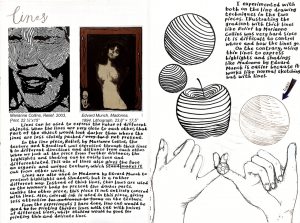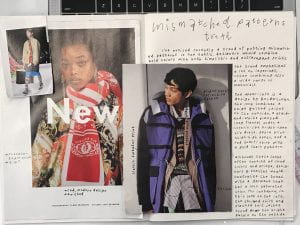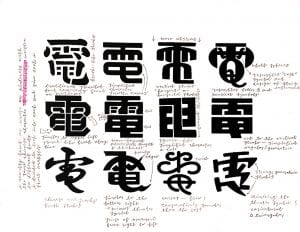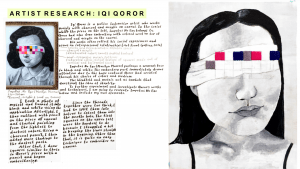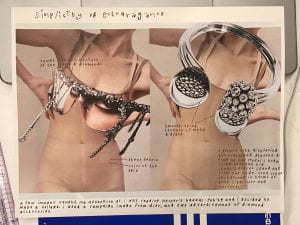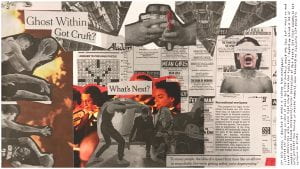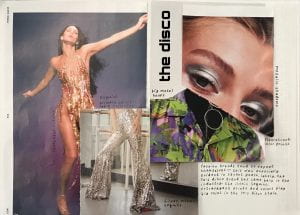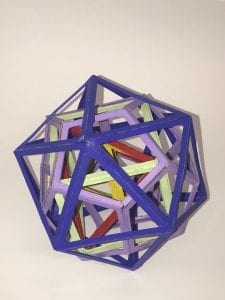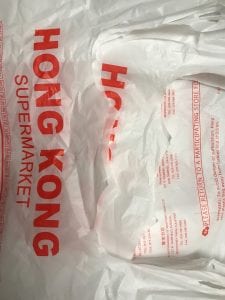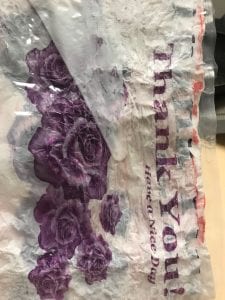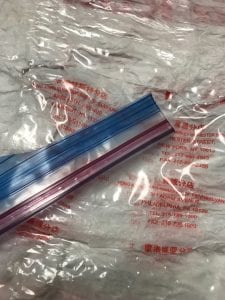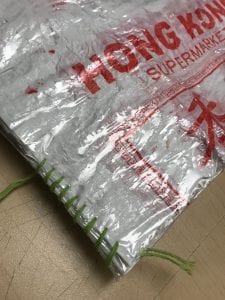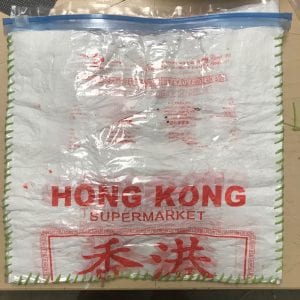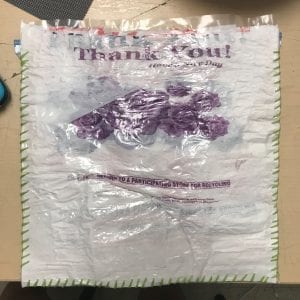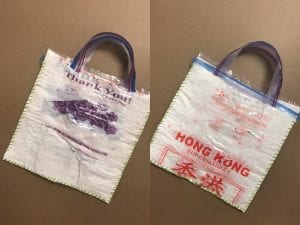Author Archives: eunicechan
Bridge #5
Space and Materiality: End of Semester Reflection
GEOMETRY OF NATURE AND PLATONIC SOLIDS
2D Drawings of the Five Regular Polyhedrons or Platonic Solids
We started the semester by exploring the flower of life and its relation to geometry and different platonic solids. It was difficult and confusing at first since I am not familiar to working with mathematical projects. However it was interesting to me how each solid connect with each other and the flower of life pattern. I got on track very soon and learnt a lot about geometry.
3D Model of the Nest of the Five Solids
When our class made our illustrations and models, we were divided into groups and were assigned colors to mix different tones and shades from. I find that process pretty effective but it was a little confusing for me when we painted since the paints got misplaced and a lot of us were unable to find the color we wanted.
This was the project that I found most interesting since it was my first try experimenting with model making, especially with platonic solids that requires immense precision. I think it was a great experience for me to create something with care and calculation before executing the idea.
PLATONIC NEST
Pipe, Plastic and Wire Model of Platonic Solids
Wire Projects
HEAD FORM IN WOOD
Wooden Head Model
Head Covering Created Using Repurposed and Recycled Materials
This course allowed me to explore materials that I have never used for art-making before. I learnt how to manipulate materials like wire, plastic sheets and pipes. I believe that these skill I have developed would be useful in the future when I make 3D pieces. I also developed problem solving skills throughout the course which would also be beneficial in the future.
Sustainable Systems Final Project
Bridge #2: Paul Poiret
Bridge #1: Imperfect Beauty
Inspiration Journal Pages for Integrative Studio 2: Fashion
Study of the Circle of Life and Platonic Solids
Upcycled Plastic Bag
I decided to create a new bag by ironing layers of plastic bags together to achieve a thicker and stronger texture. I began by stacking the used plastic bags together and folding them into smaller rectangular shape.
Folding the layered bags inside a piece of parchment paper, I ironed the bags with a heated hair straightener. Next, I added a used ziploc bag on the outside and ironed it to the bags. I repeated the process to get both sides of the bag.
I cut out the zippers from the two ziploc bags that will be used as the handle.
I began sewing the two parts together with thread.
Finally, I stapled the zippers on to each side as handles.
This project has provided me an opportunity to rethink the possibilities of plastic bags as a material. The final product turned out beautiful to me, and I am very interested in creating more sustainable objects with plastic bags. We often consider plastic bags as something that does not last long and dispose it after short-term use, however,
BRIDGE PROJECT #4: SHORT DOC
THICKER THAN WATER — A Short Documentary
Proposal:
Thicker than Water is a five-minute short documentary about my family’s history and its correspondence to the Great Escape to Hong Kong. “The Great Escape to Hong Kong” is commonly used to refer to the massive influx of population from Mainland China to Hong Kong after 1949, when Mao Zedong’s Communist party took over China. My great-grandfather and grandfather were one of the few who managed to escape before the borders were closed without going through the fatal catastrophes that later occurred. This period of history remained unspoken of until recent years due to its implication to the downside of communism in China1. This documentary is not solely an exploration of personal history, but also the history of my home city — the history that makes up most of Hong Kong’s population today.
Prior to 1997, Hong Kong was governed by the British as a colony and had a distinctive political practice from that of China. China underwent a series of infamous communist reforms, including the Great Leap Forward and Cultural Revolution, causing famine, loss of education, jobs, and even millions of death2. Fear of the Communist party and possible threats, many, especially the youth from South China, left to Hong Kong through both legal and illegal means. The fortunate were able to apply for immigration, while those out of luck could only risk their lives to swim or hike across the borders, where more than ten million had died.
My great-grandfather from Guangzhou, China, departed to Canada in the 1940s and worked at construction sites to build to the railway. When he returned to China in 1949, all the family’s savings and businesses in the country were confiscated by the Communist government as part of the reform. To earn a living and support the family, he decided to temporarily move to Hong Kong with my grandfather. However, as soon as the Communist party began ruling the country, Mao started capturing “class enemies” who went against the premises of communism, including businessmen, the middle-class and right-wing activists, and put forward a set of programs to reform China’s social structure. As a result, China was isolated from the rest of the world, including Hong Kong. Neither my great-grandfather and grandfather were able to return to China without going through communist “reeducation”, nor my grandfather’s children could move to Hong Kong and reunite with him unless they escape illegally. Our family still remains separated today.
Born and raised in Hong Kong, my mother has the opportunities that her half-siblings in China never had. She went to an English convent school in Hong Kong, received university education and eventually went to the United States, where my sister and I were born. Growing up in Hong Kong, I have been exposed to a relatively liberal environment dominated by the Chinese culture with immense British influence. In Hong Kong, the people are entitled to the freedom of expression, which is one of the characteristics that distinguishes the city from Mainland China up
to this day. Protests and demonstrations take place every month or even week in Hong Kong, while it is almost impossible to show one’s dissenting thoughts in China without bearing critical political consequences.
The diversity and freedom in Hong Kong have helped me develop my interest in the arts. When creating my own visual art pieces in secondary school, I incorporated social and political issues of Hong Kong, such as the housing problem and economic disparity, into my works. A lot of my inspirations also came from the architecture and people of the city, the products of the peculiar heritage.
All these would not have been possible if my great-grandfather and grandfather could not leave Mainland China safely like many during the Great Escape to Hong Kong. During the Great Escape, millions of forgotten souls were drowned in the river that separates their haven from their nightmare but were never given the acknowledgement they deserved in both China and Hong Kong. Immigration and refugee issues are still prominent complications around the world, and the voices of those who are involved are often silenced and forgotten. Other than connecting my own identity with my family’s history, I aim to elucidate this previously veiled moment of history to my audience in this piece.
Treatment:
I plan to begin my documentary with a song, The Glorious Days , by the Hong Kong band Beyond. This song has been known as a piece that symbolizes the expectations of the people to a utopian Hong Kong since it was first broadcasted in 1991. The band, Beyond, is also one of my mother’s favorites. As the chorus of the song plays, the visual will be gradually zooming into a vintage radio that my mother owns, following by a hand that turns it to another station. The audio then shifts to a clip of me reading out an excerpt from South China Morning Post’s interview with Chen Bingan that discusses the Great Escape to Hong Kong. The screen then slowly dissolves into a black screen showing the title of my documentary to end the introduction.
From the black screen, I will start bringing forward an audio clip of a phone call from me to my mother casually interviewing her about our family history and her experience growing up in Hong Kong separated with some of her siblings. I am going to insert pictures of my great-grandfather, grandfather, my mother and her siblings from the past and display them like a photo-roman as my mother speaks (in black and white). When it is my turn to speak in the conversation, I will switch to colored photographs from my childhood of my sister, my cousins and I. I am aiming to keep the interview like an everyday conversation with my mother but I have also set a few guiding questions for her throughout the process:
- When did you know about your grandfather and his story moving to Hong Kong? How did you feel at that time?
- Have you ever wanted to visit where he lived and worked in Canada and the route he took to leave to Hong Kong?
- How do you think your life would be different from the present if your grandfather and father did not make the choice to depart Mainland China?
- How would you describe your relationship with your half-siblings in China?Following the conversation would be a shift to a bigger picture of the Great Escape to
Hong Kong. I am going to narrate the story of the event and include images from old news reports in the video with some of my home videos with my grandparents and extended family. I want to link my family history to this shared piece of history in my cultural heritage.
I will be recording the sound of water running and incorporate it into different parts of the documentary as an element that recurs throughout. It sheds light to the subject of the piece as it delineates the river that separates Mainland China and Hong Kong, where countless ancestors of the Hong Kong population had to pass through and sometimes swim through like my great-grandfather and grandfather. The flowing of water also adds significance to the tile, “Thicker than Water”. In both Chinese and English, people often use “blood is thicker than water” to describe the bonding between family members that runs in one’s veins. The presence of water would strengthen the communication of both imageries.
To end the documentary, I am devising a scene of me swimming in a pool, while switching back and forth to a recording of me doing a drawing of my great-grandfather, who I have never seen before, with my mother’s description of his appearance. This will tie the documentary back to its theme and visualize my gratefulness towards my great-grandfather. The
portrayal of me swimming would connect myself with those who struggled to escape to Hong Kong for a better life and also helped the city to blossom into the metropolis it is today. I am intending to show compassion and also gratitude to these people who went through the most devastating parts of the Great Escape to Hong Kong.
Narrative devices of documentary:
- ● VIDEO/AUDIO INTERVIEW with my mother and grandmother (if possible)
- ● FAMILY PHOTOS AND HOME VIDEOS of my great-grandfather and grandfatherand from my childhood with my sister and cousins
- ● NEWS ARCHIVAL MATERIAL of the Great Escape to Hong Kong
- ● FIELD VIDEO AND AUDIO RECORDING of the present to tie historical event to myown identity (shot by DSLR)
First week progress
I recorded myself reading an excerpt from an article about the Great Escape to Hong Kong. I added a radio filter on top to blend it into the visual. I also gathered images from my childhood that may be useful for the project.
Second week progress
I interviewed my mom on phone and recorded the conversation. I also asked my mom for photographs of my elder family members to include as visuals for the interview in my documentary.
Final

